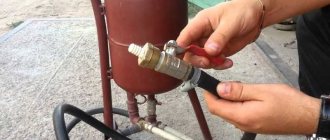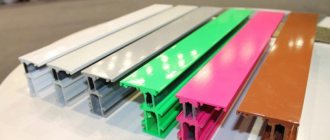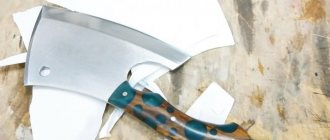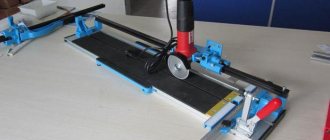If you are the owner of a plot of land, then at least once you have been faced with the need to dig holes for supports and pillars when decorating the appearance of the territory. Sometimes it happens that a hole is needed in a not very convenient place. It is quite difficult to cope with this task with a simple shovel. You can, of course, borrow a hand drill from a friend or call a specialist who can handle the appropriate tool. But if you plan to carry out such work from time to time, then you can make a garden drill for poles with your own hands from scrap materials.
The tool will be easy to use and compact, which is very convenient for storage. Typically, hard metal is used for such work. With its help, you can split plant rhizomes and small stones into pieces. Such a device will allow you to dig a hole by rotating the equipment around an axis like a corkscrew.
Selection of cutting part
The main purpose of the drill is to dig holes. Wells are made with a cutting part, which can have different shapes, namely:
- half-disc shape;
- type of auger;
- two-blade;
- helical;
- removable;
- multi-tiered;
- whole.
If you want to make a pole drill with your own hands, you must determine the design features of the device. Some models have small blades at the bottom, while at the top they increase to larger sizes. By purchasing a factory drill, you will receive an effective and functional tool for use. But it is not always possible to insert it into the soil to the required depth; in addition, the nozzles of such devices may not have the correct diameter.
DIY hole drill from a hammer drill
Without a doubt, every person who lives in a private house or spends his free time in the country has such a power tool as a hammer drill. Unlike an ordinary electric drill, it has a hammer drilling function.
Thanks to the use of this power tool, you can make holes of different diameters in a hard and durable surface without much effort and in a short period of time. In some cases, to drill holes in the ground under fence posts or piles, a power tool such as a hammer drill is used as a hole drill.
Materials and tools for manufacturing
Sometimes people who live in a private house or are owners of summer houses need to carry out a variety of earthworks.
Often there is a need to dig holes, which are necessary for the further arrangement of fence posts or so-called pile supports.
To perform drilling and carry out similar work, hand tools (drill) are mainly used.
It is worth noting that using hand tools takes a lot of time and requires huge labor costs. In some cases, when there is a need to carry out a large amount of work, digging holes, special equipment is used, which is equipped with an electric or fuel type drive.
The use of special equipment during various excavation works, such as digging holes for pile supports, significantly reduces the amount of labor costs.
However, purchasing or renting such equipment is not cheap.
It is for this reason that a large number of people use homemade hole drills to perform such excavation work, which can be made independently from the most ordinary hammer drill.
As a rule, such homemade drills are used for drilling shallow holes of small diameter. The design of a homemade pit drill consists of the following parts:
- Adapter (a reducer can be used as an alternative).
- An ordinary earthen auger.
- Rotary hammer (it is recommended to use a power tool with a good power reserve).
You can make an earth auger and adapter yourself. However, it should be noted that in construction stores you can purchase a ready-made auger (special attachment), which is designed directly for drilling holes on the ground surface. To make a hole drill yourself you will need to use:
- welding machine;
- angle grinder (grinder);
- hammer drill;
- electric drills;
- metal rod or fittings (used to make a rod);
- material for making the cutting part;
- cable and socket (used to make an extension cord).
For a homemade hole drill, it is recommended to use a power tool with a power of 2 kW or more. It is worth noting that such a device is not recommended for drilling holes in very hard soil. Using a homemade hole drill, drilling can be carried out continuously or with periodic removal of excess soil from the hole.
How to make a hole drill from a hammer drill
The work associated with converting a hammer drill into a device used for making holes in the ground involves only the creation of a special attachment. To create such a nozzle, you must perform the work in the following sequence:
- A grinder is used to cut a piece of tube or ordinary metal rod of the required length (if the power of the hammer drill is 2 kW, you need to cut off 1 m of rod).
- Cutting knives need to be welded to the bottom of the tube. To make knives, you can use a dull circular saw blade. To do this, it needs to be cut in half and welded to the tube at a slight angle (25-30 degrees).
- You need to cut off the base from the hammer drill and weld it to a tube with cutting knives. Thanks to this, the structure can be connected directly to the power tool itself.
After making the nozzle, it must be inserted into the chuck of the power tool. When drilling holes in the ground surface, it is recommended to use minimum speed. It should also be noted that to perform such tasks, it is preferable to use a power tool whose power varies from 2 kW.
Making a hole drill yourself will not take much time and will not require a lot of effort. Thanks to its use, the process of performing excavation work associated with digging small-diameter holes in the ground is significantly simplified and accelerated.
Thanks to the use of this power tool, you can make holes of different diameters in a hard and durable surface without much effort and in a short period of time. In some cases, to drill holes in the ground under fence posts or piles, a power tool such as a hammer drill is used as a hole drill.
Recommendations for the manufacture of individual parts
Before you start making a pole drill with your own hands, you must understand the components of this tool, among them the following should be highlighted:
- baking powder;
- soil receiver;
- shaper plow;
- screw.
The baking powder consists of two planes or a screw. The latter is similar to a spiral; in this unit the knife is located on a rod. There is also a soil receiver in the drill. Soil is collected here, which makes it easier to drill holes with a diameter of up to 35 cm. When making a drill for posts with your own hands, you will need to equip it with a shaper, which will be located in the lower part. This unit allows you to strengthen the columnar foundation, which is required when constructing large buildings.
Shock-rope technique
You can drill a hole in the ground for a well or install a pole not only with a rotary type tool. To perform similar work, the shock-rope technique is also used. You can carry out drilling work in this way yourself, and the depth may be suitable for the well. A drilling rig can be purchased or made from scrap materials. It consists of the following parts:
- tripod 2.5-3 m high;
- projectile (bailer);
- cable;
- winch.
The operating principle of this technique involves dropping a tubular projectile onto the well site. Due to its own mass, the bailer enters the soil and grabs it. At the lower end of the working part of the installation there is a valve that holds the soil extracted from the well. After removing the projectile, it is deployed with the technical hole down and the accumulated soil is shaken out with blows from a heavy tool - a hammer or crowbar.
Manufacturing of the installation
To prepare the drilling rig for the percussion-rope technique, you need to place a high tripod at the drilling site. It is made of high strength metal, but it is recommended to make spacers. A cable block is attached to the top point of the tripod; it must be designed for the maximum weight of the projectile filled with wet soil, taking into account a reserve of about 50 kg.
To remove the bailer from the hole in the soil, you need to use a winch with a cable. They are also selected based on mass. It is fashionable to use a manual or automatic winch for drilling, but the fasteners must match. To fix the lifting device, an object that exceeds the mass and loaded with soil, a projectile or a static object, for example a tree, is suitable.
Structure of the bailer
A bailer is a tubular projectile for percussion-rope drilling. The main part contains soil mined during well drilling. To capture, a petal or ball-type valve is made at the bottom of the projectile. The distance from the cutting part is at least 5-7 cm. The diameter of the blank for the bailer must correspond to the expected size of the well.
For reference!
The depth of the well with the percussion-rope drilling method increases by 40-50 cm in one approach. But, you should not focus on this parameter when making a bailer yourself.
The drilling speed depends on the mass of the working part of the tool. To increase this parameter, it is recommended to place a weight at the top of the projectile. For this purpose, use pancakes with holes in the middle or fill the top of the bailer with lead. When pouring along the length of the workpiece, it is necessary to take into account the place with the partition. The algorithm for making a bailer is as follows:
- The cable fastening must be located in the upper part of the pipe along the center line. To do this, weld a transverse strip and drill a hole in it according to the diameter of the cord used.
- The lower end of the pipe needs to be sharpened. Depending on the softness of the soil, you can choose a ring type (for hard soils) or a serrated type (for loose and soft soils). If there is a muffle furnace, the edge is hardened.
- To clean the internal cavity of the projectile, a longitudinal hole 3-4 cm wide is cut in the upper third. During percussion-rope drilling, the soil becomes densely packed into the projectile - it can be loosened with a crowbar and shaken out.
When working with a bailer, you need to pay attention to the condition of the cutting edge - when that part spills, you need to use other drilling methods. This is due to the fact that large stones are easier to remove from the hole with an auger tool
In dense and viscous soil, it is better to attach a bell-shaped collar to the end of the bailer, with the extension downwards.
Preparation of materials
If you decide to make a drill for poles with your own hands, then at the first stage you need to start preparing everything you need. Among the details it is worth highlighting:
- nut;
- drill;
- vice;
- pieces of metal pipe.
You will also need an M 20 bolt. You need to take 2 disks with a diameter of 100 to 150 mm. As for the drill, it must have a tip with a diameter of 20 mm. A metal pipe will lie at the base. You will need two sections of 500 mm and one of 400 mm. It is better to take a pipe with a wall thickness of 3.5 mm and an outer diameter of 40 mm. With these parameters, the finished product will be durable and will be able to withstand hard ground.
Electric models
If you want to create an electric drill for making holes in the ground, you need to have certain skills in the field of electrical engineering.
A gear motor can be used as an electric drive, which guarantees high drilling speed. By the way, to manufacture a highly productive device, you can remake an ordinary manual hole drill, created according to the above instructions. This is interesting: how to make a garden drill with your own hands.
You can also try to upgrade the hammer drill by equipping it with a cutting disc to which a round pipe is welded. An adapter is ordered from a turning specialist to connect the power tool to the mechanical part. When processing the soil with such a tool, it is important to avoid roots, otherwise they can damage it.
If the drill is created for a powerful tractor, then it is better to use durable disks made of hardened steel or any other reliable metal. Their number is determined by the number of turns, and the sizes must be the same. Holes for the rod are made in the central part. On one side, the discs are welded and then stretched a little. On the other hand, they are boiled with a weld. On the outer disks it is necessary to strengthen the rings, and place the finished structure on the rod. Ultimately, the bottom edge is welded to the rest of the parts.
Also, craftsmen use an ordinary electric drill as a basis for a future drill. The “Rebir” model has proven itself to be excellent, demonstrating a power of 2 kW, which is supplemented by an auger. Due to the presence of a third cone in the drill, it needs to be finished with a lathe, making recesses on both sides. A drill with a third cone is welded to the adapter, and the drilling section is cut off.
This design option is characterized by large dimensions and impressive weight, so it is not entirely comfortable to use alone. For convenient operation, the equipment is equipped with an electric winch, and a radiator is mounted on the thyristor.
Preparing tools
You can borrow the discs from a regular circular saw or make them yourself. To do this, you should find 3mm sheets of metal. Among the tools that will be needed in the work are:
- angle grinder;
- welding machine;
- metal drills;
- hammer;
- drill.
If you do not have a tip with a drill, you can replace it with a drill with a shank that looks like a cone. Its diameter must match the screw. In order to prevent injury, you should use soft bicycle handles.
Types of equipment
In what cases can this type of equipment be used:
- When utility networks are laid.
- For the construction of a well.
- For installing a load-bearing base on piles for light outbuildings or other structures.
- When installing a fence.
Types of structures and their technical characteristics
In the past, vertical shovels were used for such purposes. They have been replaced by new, improved, simple models that will greatly facilitate all types of work.
A few simple kits:
The simplest mechanical device
It is a conventional double-sided equipment with a tubular rod, a handle and a cutter with 2 blades on the other side.
Used for digging shallow holes and shallow wells.
It can be used for all types of work
Auger drilling device
The main differences of the improved manual model are that behind the cutting blades there is a screw auger. Thanks to several cutters and a split design, work is carried out quickly, and due to extension, penetration occurs to the required depth.
Step-by-step work
If you decide to make a manual post drill with your own hands, draw a circle with a center on a metal sheet. This part will be the blade. The circle is cut out with a grinder, after which a cutting line should be drawn along the diameter line. At the next stage, you need to draw a cutout line that will correspond to the circumference of the collar. The disk is divided into two parts, after which a hole for the knob should be cut. At the end of the pipe, which will serve as a wrench, four longitudinal lines must be made with an angle grinder. These are formed into a point using a hammer. In this case, you need to make cuts at the very center of the pipe.
The tip is processed by welding. The driver should not become clogged with soil during operation. When making a drill for fence posts with your own hands, in the next step you will need to connect the disk to the collar using a weld. This is done at a distance of 5 cm between them. It is necessary to maintain the angle of the plane of rotation, which is 20˚.
Designs and Applications
There are three main designs of earth drills:
- Garden. Usually these are two semicircular blades welded at an angle to one another. A hand drill of this design is used to organize holes for planting plants, which is why it is called “garden”. But the same tool is used to make holes when installing posts for fences, gazebos and other light buildings.
An example of a homemade earthen garden auger
- Auger drill. It differs in that it has a longer cutting part. It is used for the same purposes - to make holes for pillars. Due to its design - a longer cutting part - it needs to be removed less often, so drilling usually goes faster.
The auger drill is distinguished by spirally wound several turns of the spiral
- Drill for TISE piles. This design is similar to a garden auger, but has an additional folding blade to form the expansion at the bottom of the pile characteristic of this type of foundation.
Folding blade - features of the TISE pile drill
Garden earth drills that are easier to make. Depending on the type of soil on which drilling is carried out, their design is slightly modified. This is the beauty of homemade drills - they can be “sharpened” to specific conditions and it’s not just about the size - the blades can be made removable, bolted on, but also about the design features. Yes, ordinary drills in the store are inexpensive, but they are “universal”. They work well on “light” soils.” On loams, clays, marl, etc. they are ineffective.
This is interesting: How to make a hand drill for the earth with your own hands - we explain in detail
Working on an extension pipe
Next, you can begin working with the extension pipe. It must be equipped with a handle. This part is welded in the shape of the letter T. An amplifier in the form of a scarf is attached to it. The workpiece should be inserted into the driver, making a hole between these parts. This will allow you to fasten the parts with a pin. There should be several holes so that the length of the product can be adjusted. You can complete the work process by sharpening the blades. The edge of the cutter is processed so that when rotating the tip is directed downward.
Application of protective coating
Having made a drill from a pipe for poles with your own hands, you must protect it from external influences and premature aging of the material. This will prevent rust from occurring. The parts of a homemade drill are processed with sandpaper and coated with a primer. A phosphating solution is applied on top. The finished product after this treatment can be painted.
When using a tool, after each use it is usually disassembled and cleaned of dirt and dust. Particular attention should be paid to connections. They are coated with a special lubricant that helps repel water. You should not miss this moment, because proper care will be an excellent prevention of bolt jamming and will allow the equipment to operate uninterruptedly for a long time.
Useful tips
When trying to make a high-quality hole drill with your own hands, you need to be patient and follow the instructions exactly. With a responsible approach, in a short period of time you can create a good tool with which you can solve a lot of construction and household problems.
It is important to understand that in some models the cutting elements are made removable, and the holes themselves are made using garden drills. And for their further expansion, a folding knife with a special earth receiver is taken. This guarantees quick completion of the task with a significant reduction in labor costs.
How to improve the tool
When making your own garden post auger, you can think about improving it. When drilling holes, you may encounter large rhizomes that lie tightly in the ground. Sharp edges make work easier. For ease of use, teeth should be cut on the sloping area of the blade or the cutting part should be rounded.
The design can be improved by adding removable cutters. They will allow you to drill holes of any diameter. In addition to the manufacture of spare parts, it is necessary to provide for their attachment to the collar. They are connected by two iron plates, fixed by welding. Two holes are drilled into the mounting plates and blades for the bolts. The cutters are fixed with M 6 bolts. The bolts may interfere during operation. To eliminate this problem, they are screwed in with the threads facing up.
If you want to make the best DIY post drill, you can improve it using one more method. To do this, a narrow metal plate is cut out and turned into a cone using a grinder. This will improve the efficiency of the lower end of the knob. The dimensions of the plate are 10 x 2 cm. As a result, you should get a kind of point. There is no need to make cuts in the collar. Metal plates are inserted into the end and secured by welding. They are flattened to form a peak.
If you want to use a pike, you can base it on a different method of making it. To do this, take a 17-centimeter metal plate, from which a screw similar to a corkscrew is cut out. The further algorithm of actions will be the same as in the first option.
If you decide to make a pole drill with your own hands, photos of such structures will allow you to understand which design to give preference to. If a screw is provided, a drill can play its role. It should be able to handle wood and metal. Such a tool will penetrate the soil more easily and will drill holes of the required depth.
If you are working with dense deep layers of soil, you can weld a small flat cutter between the cutter and the pick. This design will allow you to loosen the ground and center it when drilling. For such a part, you need two metal plates 3 x 8 cm. A trick of this kind will speed up the work with the tool.
When making a drill for installing pillars with your own hands, you can supplement it with cutters made from disks that are designed for working with stone. The circles are cut along the radius, and the hole widens in the center. It must match the diameter of the knob. Bending the disk allows you to get something like a screw or a corkscrew. This part will only need to be welded using the algorithm described above.
The cutter can be made from a circular saw blade. The teeth will cope with rhizomes and hard soil. You can upgrade the tool at your discretion. But no matter how high-quality it is, before the drilling process it is better to loosen the soil with a shovel, then the device will penetrate the soil well and the work will go faster.
Auger drill
Due to the large number of turns, an auger auger creates significant resistance, that is, it is much more difficult to work with it than with a garden auger. But augers are used mainly in the presence of a mechanized drive - when making a drill for deep wells - for water, for installing underground probes for a heat pump, etc.
This is what an auger drill looks like
To make a homemade auger drill, you will need several metal disks. The number of disks is equal to the number of turns. The disks are cut identically, a hole is cut in them in the center for the rod, as well as an identical sector - so that they can be welded.
A sector is marked in the rings and cut out
The discs are welded on one side, then, slightly stretching the resulting accordion, the seam is welded on the other side. Rings are welded on the outer disks. The welded discs are placed on the rod, the lower edge is welded.
It turns out to be such a big spring
Next you will need a winch. The blank for the auger is secured, the winch hook clings to the ring and is stretched to the required length, after which the auger is boiled.
Almost done











